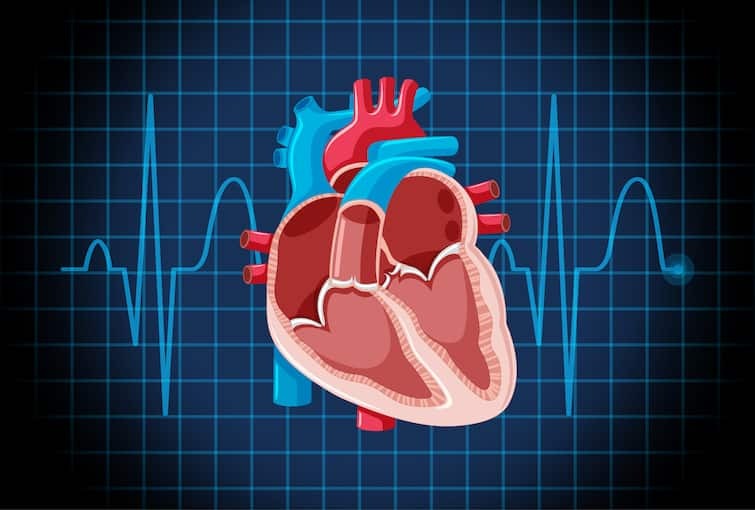
Blockage in the heart: When the arteries near the heart, also called coronary arteries, become narrow or blocked due to some reason, a blockage in the coronary artery may occur and this is called coronary artery disease. If one's medical tests reveal that a blockage is occurring in the coronary artery of the heart, it should be taken very seriously and timely treatment should be started as it may lead to serious heart diseases and other problems in the future.
Fat accumulation can narrow or block the arteries that supply blood to the heart muscle, reducing blood supply and leading to a heart attack. Dr. Abhijeet Borse, Senior Interventional Cardiologist, Asian Heart Institute, says that early recognition of the symptoms of coronary artery blockage is very important so that timely treatment can be started and preventive measures can be taken.
Coronary artery disease occurs when coronary arteries become narrow or blocked due to atherosclerosis. Atherosclerosis is a condition in which cholesterol, fatty deposits or other substances build up in or around the coronary arteries. This narrowing makes it difficult for oxygen-rich blood to reach the heart muscle, potentially leading to chest pain or a heart attack.
It can be difficult to recognize the early symptoms of a coronary artery blockage, as symptoms can vary from person to person. However, some common early signs are:
Chest pain or discomfort: One of the most common symptoms of a coronary artery blockage is chest pain or discomfort. This pain may feel like pressure, squeezing, or fullness in the middle or left side of the chest. It may also spread to the shoulder, neck, or jaw.
shortness of breath: Shortness of breath or breathlessness may occur when a person does physical work or is lying in bed. These symptoms may indicate a decrease in blood flow to the heart. This symptom may occur along with chest pain or on its own.
Tiredness : If you suddenly start feeling very tired after doing everyday tasks, then this can also be a sign of blockage in the artery. Due to this fatigue, physical capacity may decrease and you may feel weak.
Dizziness or lightheadedness: Fainting, dizziness, or lightheadedness can result from reduced blood flow to the heart. This can happen suddenly and may be accompanied by chest pain or shortness of breath.
Nausea or indigestion: Some individuals may experience nausea, indigestion, or discomfort in the upper abdomen, which is sometimes misinterpreted for gastrointestinal problems rather than heart-related symptoms.
cold sweat: Breaking into a cold sweat for no apparent reason can be a sign of a heart problem. This symptom may also be accompanied by other symptoms such as chest pain or discomfort.
Pain in other parts of the body: In addition to chest pain, some people may also feel pain and discomfort in other parts of the body such as the back, arms, neck, or jaw.
This disease is caused due to these reasons
There are many factors that can cause blockage in the coronary artery. Being aware of these risk factors can prevent this disease.
Age: The risk of this disease increases with age. Men over 45 years of age and women over 55 years of age are at higher risk of this disease.
Family history: A family history of heart disease can increase the risk of developing a blockage in the coronary artery. If one has a family history of this disease, you should consult a doctor in time.
Cigarettes: Tobacco use also increases the risk of coronary artery disease.
High blood pressure: People who have high blood pressure can have blood clots in their arteries. So keep getting your BP checked from time to time.
High cholesterol levels: High levels of LDL (bad cholesterol) can lead to plaque buildup in the arteries.
Diabetes: Diabetes increases the risk of coronary artery disease by accelerating plaque buildup.
Obesity and poor lifestyle: Being overweight and lack of physical activity contribute to the risk of CAD.
 look news india
look news india